Have you ever had a conversation with your print vendor and been left completely confused by the end? You are probably not alone. Us here in the printing industry tend to talk in printer lingo. Since we live, eat, and breathe printing, it comes as second nature to us and rolls off the tongue.
To compensate for all those times we should have explained things in layman’s terms, below you will find a list of common printer terminology. After reading this, you will be able to speak the language of printers!
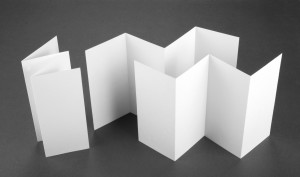
© fontgraf / Fotolia
Accordion Fold – Folding that paper into pleats resembling the bellows of an accordion. Each panel is about the same size and the folds go in opposite directions. It is also referred to as a zig-zag fold.
Acetate – This is a transparent cover that overlays the first page of a document. Acetate is typically referred to as a clear plastic cover.
Artwork – The original materials needed to produce the printed piece. This includes photos, graphic images, text, and any other components used to design the file.
Aqueous Coating – This is a clear, gloss coating that is applied to protect printed pieces. The coating improves durability and deters dirt and fingerprints.
Bleed – When a printed piece has a bleed, this means that the printing goes to the edge of the sheet after trimming. The bleed refers to the art that is printed over the trim lines that is cut off to achieve its final finished size. The standard room for a bleed image is 1/8 inch passed the edge. Learn more about bleeds by reading our blog Bleed? No sweat! (Or tears).
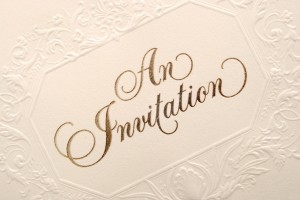
Blind Emboss – A blind emboss is an image that is stamped on a non-printed area of the stock that results in a raised image. The embossed image is the same color as the paper.
Bounce – This refers to the inconsistent positioning of the printed image on the paper during printing.
C1S & C2S – Abbreviations for stock being coated on one side and coated on two sides. Learn more about stocks in our previous blog What Paper Stock Should I Use? Decisions, Decisions…
Carbonless Paper – Also known as NCR, this paper is coated with chemicals that allow transfer of images from one sheet to the others below with pressure from writing or typing.
Chip Board – Typically seen used as backing for pads of paper, or as a “stiffener” to protect thinner prints when transporting or mailing. It is a low grade of cardboard.
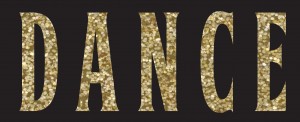
Clipping Mask – A clipping mask is an object whose shape masks other artwork so that only areas that lie within the shape are visible. Masks allow easy hiding of unwanted parts of a layer and can fit images into shapes.
CMYK – Stands for Cyan, Magenta, Yellow, and Black, and is also known as 4 color process printing. This is a full color model in which all colors are described as a mixture of these four colors. It is the standard color model used in the offset printing. Read our blog Color Matching: Screen vs. Paper to learn more about the CMYK Color model.
Coated Stock – Paper that is treated with clay producing a smooth look and feel for quality printing. Finishes for coated stock include gloss, silk, and matte. Learn more about stocks in our previous blog What Paper Stock Should I Use? Decisions, Decisions…
Collate – The organization of printed material in a requested specific order.
Color Correction – Is the process of altering shades, hues, and contrast before printing to ensure it is displayed properly when printed.
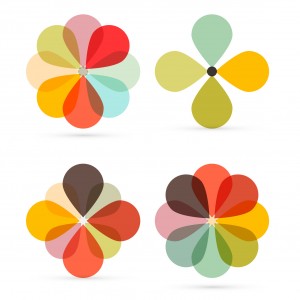
Color Transparency – An effect applied to an object causing it to appear transparent and letting objects underneath show through.
Comb Binding – Also called plastic bind and GBC bind, which is a brand name. To comb bind a document, the sheets are inserted into the teeth of this flexible plastic through pre-punched holes along the edge of the sheets. Learn more about binding and read our blog All Kinds of Binds – Choosing a Binding Method.
Contrast – Refers to the difference between dark tones and light tones on a printed document, which can be adjusted from the computer or the printer.
Cover Stock – A thicker, heavier paper that is suitable for folders, business cards, covers of books and posters. This stock can be coated with various smooth finishes or uncoated with a rough surface. Learn more about stocks in our previous blog What Paper Stock Should I Use? Decisions, Decisions…
Cropping – A method used to remove part of a digital image.
Crop Marks – These marks, also referred to as cut marks, trim marks, or tic marks, are printed cutting lines on the printed sheet of artwork. They indicate where the piece needs to be trimmed. Learn more about crop marks by reading our blog Bleed? No sweat! (Or tears).
Cure – After a piece is printed, coated, or varnished they must cure, or dry, to ensure good adhesion to prevent transfer of an image from one sheet to another.
Deboss – The reverse of embossing. The pressed image goes into in the paper, lying below the surface rather than above like embossing.
Die – A device used for cutting, scoring, stamping, and embossing.
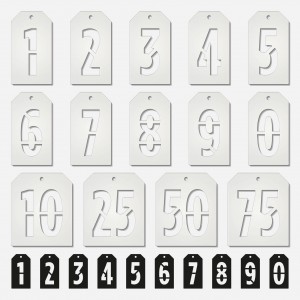
© Dog-Made-Sign / Fotolia
Die Cutting – This is the process where irregular shapes are cut out of the stock.
Dots-per-inch – Abbreviated as “dpi” – is a measurement of resolution for printers, scanners, and monitors. Learn more about dpi in our blog Understanding File Resolution and its Importance in Print.
Drop Shadow – Is an underlying soft-edged copy of an object, graphic, or text that adds a three-dimensional appearance to a page.
Dull Finish – This flat, not glossy finish is applied to coated paper and is smoother than a matte coated finish. It can also be referred to as suede or velvet finish.
Duplexing – Allows for automatic printing of a sheet of paper on both sides.
Edge Seal – When laminating a printed piece, an edge seal extends the laminate pasted the edge of the piece sealing the laminate together from front to back. A border of laminate will surround the piece.
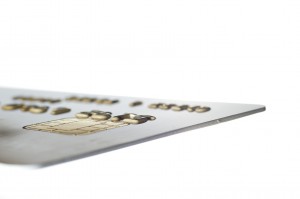
© Glenn Young / Fotolia
Embossing – A process in which a physical impression is made onto cover stock over printed text or image. This impression lies above the surface of the stock, making it three-dimensional.
EPS (Encapsulated PostScript) – A PostScript image file format that is compatible with PostScript printers and is often used for transferring files between various graphics applications.
Finish – Refers to the surface quality of the paper. For example, stocks can have a gloss, silk, or matte finish. Learn more about stocks in our previous blog What Paper Stock Should I Use? Decisions, Decisions…
Flattening – In a flattened image, all visible layers are merged into the background, greatly reducing file size. Flattening an image discards all hidden layers and fills the remaining transparent areas with white. Flattening a file should be done once the file is completed and ready to be printed.
Flood – Flooding refers to completely covering the sheet with an ink or a varnish.
Flush Edge – When a piece is laminated, a flush edge is when the laminate is cut flush to the edge of the piece without any overhang.
Foil Embossing – Once the image has been foil stamped, the same area is the embossed with the same die to create the raised three-dimensional image.
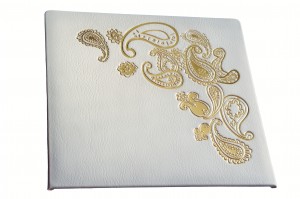
© absurdovruslan / Fotolia
Foil Stamping – The process in which a heated die fuses the foil on stock. The design of the die is them bonded to the surface of the stock. Typically foil stamped pieces can be found with gold, silver, and other metallic foil colors.
FTP (File Transfer Protocol) – FTP is a language used to moved files. The term commonly refers to the process of sending a file via FTP or to an FTP site.
Gate Fold – This fold involves taking the left and right edges of the stock and folding them inward with parallel folds where they meet in the middle without overlapping.
Ghosting – There are two types of ghosting – chemical and mechanical. Chemical ghosting is described as a “phantom” image (faint image) on the reverse side of a sheet due to the transfer from the front of one sheet to the back of another sheet. Mechanical ghosting refers to the faint image appearing as a repeat of an image on that same side of the stock during the print process.
Gripper Edge – Also known as the feeding edge or leading edge. It is unprinted space at the edge of a sheet which allows for the printing press to grip onto it.
Impression – The total number of printed page sides produced by a printer. A double sided document has two impressions.
Imprinting – The process of imprinting is to print new copy on a previously printed sheet. Commonly used in mailings where recipient addresses need to be printed on envelopes that already have return addresses on them.
Indicia – A postal marking imprinted on mail used instead of a stamp. Used in bulk mailings.
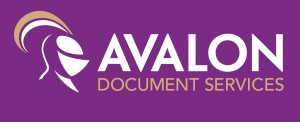
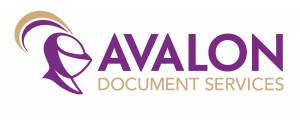
Knockout – When text or images are “knocked out” they are reversed out of a dark background so that they appear in the color of the paper being printed on.
Laminating – The process of taking a preprinted document and overlaying it with a layer of plastic or some other protective material.
Offset Printing – This print process transfers ink from a plate, then to a blanket, then to the stock rather than printing from the plate directly to the stock. Learn more by reading our blog Digitial vs. Offset Printing – Which is Better for Your Project?
Opacity – The quality of paper that prevents images on a two-sided piece from showing through to the other.
Packaging – The process of packaging a file means creating a folder that contains the document, any necessary fonts, linked graphics, and a package report. Learn more on packaging and read our blog Save Yourself Time – Remember Your Fonts & Links!
Pantone Matching System (PMS) – This color matching system is used to print “spot” colors which can only be produced using their own ink, unlike in CMYK printing where the mixture of the four colors is needed to print. These colors can also be referred to as Pantone colors. Read our blog Color Matching: Screen vs. Paper to learn more about the Pantone Matching System.
Perfect Binding – Common examples of perfect bound books are paperbacks and thicker magazines. This binding process involves taking the spine sheet edges, roughing them up, and bonding them with glue to the cover. Learn more about binding and read our blog All Kinds of Binds – Choosing a Binding Method.
Perforation– The process of creating a line of punched dots on stock so that part of it can be torn off and detached. Raffle tickets have perforated stubs.
PostScript- A type of programming language that describes the appearance of a printed image. It was developed by Adobe Systems and has become the industry standard for printing and imaging.
Press Plate – A “plate” is a mold made out of a piece of paper, metal, or rubber which carries an image to be reproduced using a printing press.
RBG (Red, Green and Blue) – A color model that’s main purpose is for the sensing, representation, and display of images in electronic systems such as televisions and computers. Read our blog Color Matching: Screen vs. Paper to learn more about the RGB Color model.
Ream – When a ream of paper is mentioned, this means 500 sheets of paper.
Register – When something is “in register” it means that the images on the front and back of the piece are in exact alignment with each other. When the registration is off, this means that the images on the front and the back are not lining up as they should.
Resolution – Reefers to the sharpness and clarity on an image. In print resolution is defined by how many pixels (dots) fit into one inch, and is sometimes identified by the width and height of the image. Learn more about resolution in our blog Understanding File Resolution and Its Importance in Print.
Saddle Stitch – A binding method in which documents are bound by stapling down the spine of the folded pages. Learn more about binding and read our blog All Kinds of Binds – Choosing a Binding Method.
Scoring – A finishing method that is used to crease the stock for the purpose of making folds easier, cleaner, and more accurate.
Self-Cover – A cover that is the same paper stock as the internal sheet, typically a text weight stock, whereas you would normally use a cover weight stock for the cover.
Self-Mailer – A printed piece that is mailed without an envelope.
Set-off – Defined as the unwanted transfer of ink from one printed sheet to another.
Slip Sheet – Separate sheets independent from the original run positioned between the printed run for a variety of reasons, typically either to act as a divider or to prevent set-off.
Specs – Specifications of a print project are complete and precise descriptions of all the features of that particular project. This includes size, paper grade, quantity, printing, binding, and other finishing methods.
Spiral Bind – Also referred to as coil bind. This bind uses a spiral of continuous wire or plastic looped through holes. Learn more about binding and read our blog All Kinds of Binds – Choosing a Binding Method.
Spot Color – A color that is printed from one printing plate which contains one matched color of ink. Read our blog Color Matching: Screen vs. Paper to learn more about spot colors.
Spread – An image that extends across two neighboring pages in a book or brochure.
Substrate – Any material or surface in which printing is done on. Learn more about non-paper substrates by reading our blog What’s Your Sign?
Text Weight – A high quality light weight printing paper, and is not thick like cover stock. Learn more about stocks in our previous blog What Paper Stock Should I Use? Decisions, Decisions…
Thermography – A printing process where the slow drying ink is applied to paper. While the ink is still wet a tacky powder is dusted over it. The paper is then passed through a heat chamber where the powder melts and fuses with the ink to produce a raised surface. Also knows as raised ink.
Typsetting – The process of setting textual matter in type or into a form to be used in printing.
UV Coating – A very shiny and durable high gloss compound that is applied to printed material and instantly cured with ultraviolet light.
Variable Data Printing – A form of on-demand printing in which text, graphics, or photographs can be changed from one printed piece to the next. For example a set of postcards can have the same basic layout, but can be printed with a different name and address on each letter. Read more about variable data printing in our blog The Impact of Personalized Print.
Varnish – A thin, liquid coating that is applied before or after an image is printed. Varnish protects and enhances the image quality. Prints can also be spot varnished in which a certain area of the print can be varnished to highlight that portion of the piece.
Vector – Vector files are made up of many individual, scalable objects defined by mathematical equations rather than pixels, thus producing the highest quality image possible. Common types of vector graphics include Adobe Illustrator and EPS files. Vector graphics are ideal for logos, which can be small enough to appear on a business card, but can also be scaled to fill large banners without losing quality. Read our blog for more on vector images – The Power of Vector Files
Vellum – A finish of paper that is somewhat bulky, slightly rough, and is lighter than cover weight, but heavier and sturdier than text weight paper. Learn more about stocks in our previous blog What Paper Stock Should I Use? Decisions, Decisions…
Watermark – A recognizable image or pattern in paper that appears as various shades of lightness/darkness. A watermark is designed to appear only when the paper is held at again the light, at a particular angle, or against a black background. Typically appears on fine papers, or on some documents to prevent counterfeiting and copyrighting.
Wove – A smooth paper with a gentle patterned finish. Learn more about stocks in our previous blog What Paper Stock Should I Use? Decisions, Decisions…
Zip File – Zipping a file compresses files into a smaller archive, taking less time to transfer across a network or the internet.
If you come across any other terms you may not completely understand, let us know. We would be happy to explain them for you. Don’t forgot that Avalon can help with all of your printing needs regardless of how simple or complex your project maybe. Give us a call today!
Learn how Avalon’s secure print and mail services allow you to focus on the bigger picture.


